Considering the performance to price ratio, going for an Intel i7 or AMD Ryzen 7 seems the best choice for most Studio One users. Although Presonus are recommending Intel i3/AMD A10 as a bare minimum, you’re likely to need a CPU way faster than that.
A computer is today’s mixing desk of the past. We must constantly update it to accommodate more demanding plugins and VSTs. The big question is – how up-to-date should your computer be?
This question is more closely focused on CPUs as they are the most relevant component for music production.
In this article, I’ll try to give a comprehensive guide for getting optimal CPU usage for the latest version of Studio One based on your needs.
Also, I’ll offer some tips on maximizing your performance with an older processor and discuss in which situations it’s not essential to have state-of-the-art components.
What’s The Best CPU For Studio One?
It’s always hard to generally recommend a single product that will work for everybody. After all, we all have different needs and different setups.
A CPU recommended by Presonus is Intel Core i3/AMD A10 or better.
However, this spec is calculated with not having 3rd party plugins in mind. So, will this be enough?
Well, kind of.
If you only intend on using native plugins and virtual instruments, then you’re probably good to go. But I find it hard to believe that you won’t use any 3rd party stuff while working on any DAW (digital audio workstation).
Studio One especially lacks some modern EDM colors and textures, so you can be almost sure that you’ll need to throw some CPU-hungry synths in the mix.
This, unfortunately, makes an i3/AMD 10 a poor overall choice for a modern EDM music producer.
However, you can work quite comfortably with audio tracks. Unless you slap a couple of dynamic processors (like soothe) and a couple of convoluted reverbs (like Altiverb), you shouldn’t have too much problem working with that setup.
If your goal is to run multiple synths, drum machines, and effects in real-time, then I’d advise going for at least an i5/Ryzen 5.
This is still not a sacrifice-free option, as you’ll still have to monitor your CPU bar carefully and disable plugins that are taking up too much CPU power. But you will be able to run most plugins in real-time.
If you want to slap on plugin after plugin and not worry about whether or not you’ll experience overload glitches, an Intel Core i7/ AMD Ryzen 7 is the way to go.
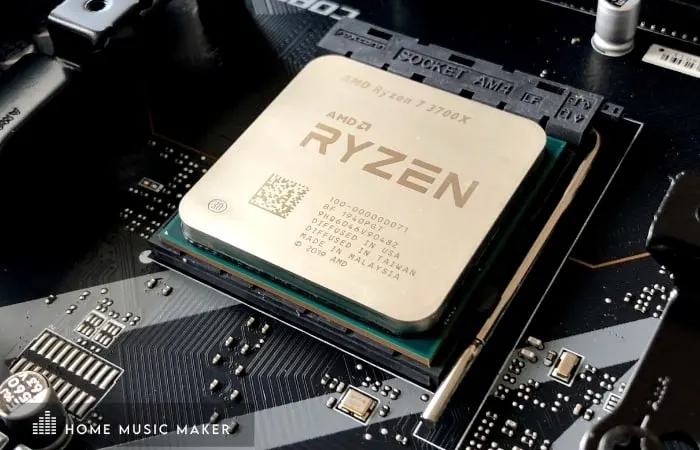
Click here for the latest price of the AMD Ryzen 7 3700x
At the same time, it’s the perfect performance to price ratio you’ll find right now on the market.
Click here for the latest price of the Intel i710700k
Intel Core i9/AMD Ryzen 9 is obviously a great option. Still, unless you intend to run an insane amount of plugins, it’s probably a bit overkill and way too expensive.
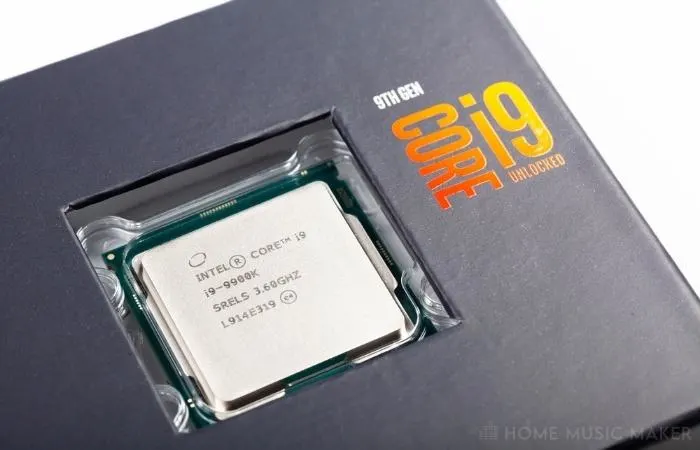
As far as the number of cores goes, a bare minimum would be at least a dual-core processor. It isn’t recommended if it can be avoided, but it will kinda work.
Having four cores or more is definitely a better choice. 8 cores might be a bit too much, but if you can afford it, then go for it as you’ll future-proof your rig quite nicely.
The amount of GHZ is not as important as the number of cores you have. Regardlessly, I would recommend at least 2 GHz, preferably more.
Intel Or AMD?
As far as audio production goes, Intel processor is always a slightly safer choice. That’s not to say that AMD CPU is any worse. Honestly, I’ve found that they both work equally well.
However, you have to consider that Thunderbolt connection products won’t work on AMD CPUs as that technology is made by Intel and exclusively for Intel processors.
Other than that, there is no significant difference between the two. AMD is slightly cheaper than an Intel CPU and has an unfounded reputation for being worse than Intel.
Why Is The CPU The Most Important Component For Music Production?
Your CPU is the single most crucial component for music production because it allows you to work on demanding projects without slowing you down.
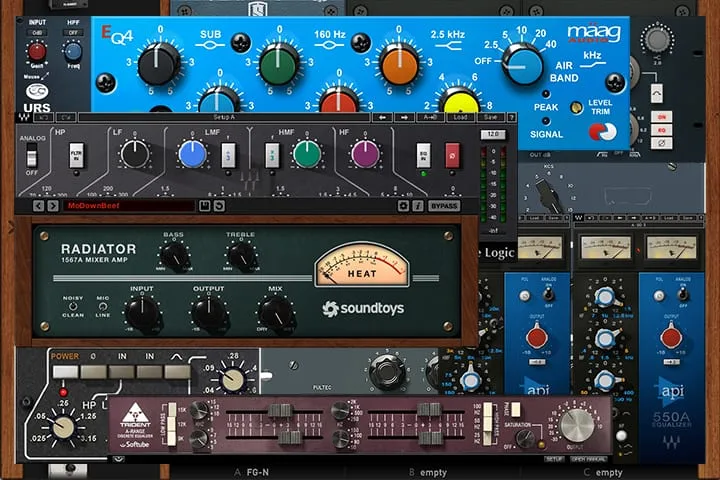
Things like virtual instruments (drum libraries, synths, etc.), reverb, and dynamic processors are quite CPU heavy. Having multiple instances of these (and you’re bound to have them on most of the songs you mix) will quite quickly fill your CPU meter, and that’s when the mixing process becomes sluggish and frustrating.
For this reason, having a good CPU can mean a world of difference, especially in the latter stages of mixing.
Your plugins introduce latency, plugin windows take forever to load, and you get horrible glitches, pops, and crackles. It really isn’t fun at all.
A good CPU (coupled with a fair amount of RAM, I must say) will solve all of these issues. The better your processor is, the more plugins you can slap on your project without causing a significant decrease in performance.
Also, a good CPU will save you a lot of time.
Not only will the overall performance be faster and smoother, but you’ll also waste way less time waiting for projects to load, songs to export, and rendering tracks.
You might think that waiting a couple of seconds is not a big deal. Still, every second can be crucial in intense mixing sessions to keep your ideas flowing. Furthermore, your projects are a lot less likely to crash due to an overload.
Can An Older CPU Do The Job?
The shortest answer – yes!
Will you have loads of fun mixing songs? Probably not so much. Let me elaborate.
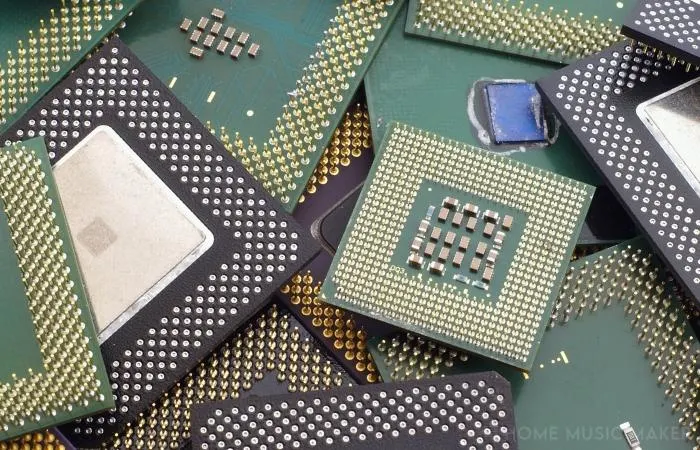
Producing music with an older CPU is possible. I even quite like the idea of achieving great things with limited to no resources. However, be prepared to have your patience tested.
Mixing with a slow CPU that will quite quickly during mixing reach its limit is a slow and delicate process. While there are ways to reduce the load off of your CPU, you’ll still have to adapt your mixing style to be more resourceful.
The worst part about it is the looming project crash that usually happens sooner or later if you dabble in the “hot zone” for long enough.
Having said all this, I believe that with proper handling, even machines from the last decade can mix a smashing hit in 2022. That’s what we’ll explore in the following section.
Tips For Using An Older CPU With Presonus Studio One
Before we go into some specific things you can do in Studio One, I’d like to talk about a general mindset you’ll need to mix an entire song on an older machine.
The most important skill you’ll need to master is resourcefulness.
What it actually means is reducing your need for plugins. At the beginning stage of the production, you should strive to get a great sound right at the source.
So if you’re recording audio vocals, don’t settle for “good enough, we’ll fix in the mix.”
You should already have a limited plugin use in mind and invest more time in proper mic placement, distance from the sound source, etc. This will ensure that your song already songs quite decent, and you won’t need a ton of plugins to make it sound amazing.
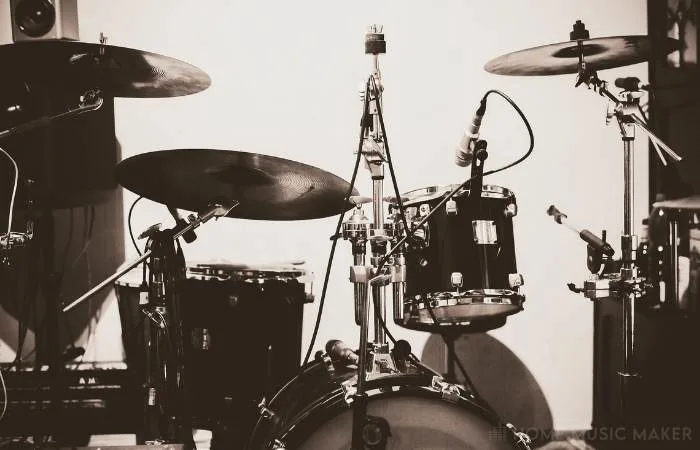
Another thing to do is to use your plugins in the most efficient way possible. This closely ties to how good you are at EQing and using compression. Even the most experienced mixers rarely use more than one or two EQs on a single track.
The trick is exactly knowing the problem frequencies and fixing all the issues with a couple of EQ moves.
Also, you can use your plugins more efficiently by applying the processing mostly on bus channels. If you feel like the whole drum kit sounds boxy, instead of knocking off 300Hz on every track, you can simply use one move to solve all of your problems.
However, this only works if your initial sounds are recorded or pre-rendered. If you rely on huge synthesizer plugins to draw your sounds, you’ll need to have a slightly different approach.
If your CPU can’t handle various VSTs running simultaneously, you’ll have to render your virtual instrument and effects tracks.
For example, suppose you have a particularly demanding plugin that you really need, but you can’t afford to leave it running in the project. In that case, you can record that track directly in your DAW with that particular plugin running.
This is an effective way to reduce the burden on your CPU without having to sacrifice the sound. The only downside is that once you render your track, it is what it is – in other words, you won’t have the option to go back and tweak things.
This can also be done with virtual instruments as well as effects.
Some virtual instruments, like drum libraries, even have that option in the software itself. This way, you can bounce the tracks out of your VST plugin, disable it, and import the bounced tracks back into the project afterward.
The way you can quickly bounce tracks in Studio One is by selecting the audio event you want to render and using a keyboard shortcut Ctr+Alt+B ([Ctrl]/[Cmd]+[B] on Mac). Alternatively, you can right-click on the event and select “Bounce To New Track” under the Audio tab.
Looking to upgrade your Studio One? Check out the latest deals below.
| Image | Product | Features | Price |
|---|---|---|---|
Sphere  |
| Latest Price | |
Professional  |
| Latest Price | |
Artist  |
| Latest Price | |
Prime  |
| Latest Price |
Related Questions
What Screen Size Is Optimal for Music Production?
Preferably you can go for a Full HD resolution monitor, but even an HD monitor will work. Some project windows will be hidden, and there will be less space to fit multiple windows in, but it will definitely do the job.
Should I Choose PC or Mac for Music Production in 2022?
Both choices are great. I would focus more on specs rather than on computer brands.
Click here for our complete desktop PC build step-by-step guide.
8GB Ram Vs 16GB Ram for Music Production How much Do You Need?
8GB should be acceptable. If you’re using a lot of CPU-heavy synths and plugins, 16GB is actually recommendable.
How Much HD Storage Do You Need for Music Production?
How to Tell if You Have Low RAM for Music Production?
If you start experiencing glitches and pops due to a memory overload quite early in the mixing process (meaning you haven’t added that many plugins yet), that’s the time to consider upgrading your RAM.
Which Windows OS Is best for Music Production?
There seems to be a general consensus that Windows 10 operating system performs the best. Unlike Windows 8 and Vista, which were heavily criticized by the audio community.
Click here to find out if you Need A Graphics Card For Music Production.

 Want to connect with other music producers for help and guidance?
Want to connect with other music producers for help and guidance?